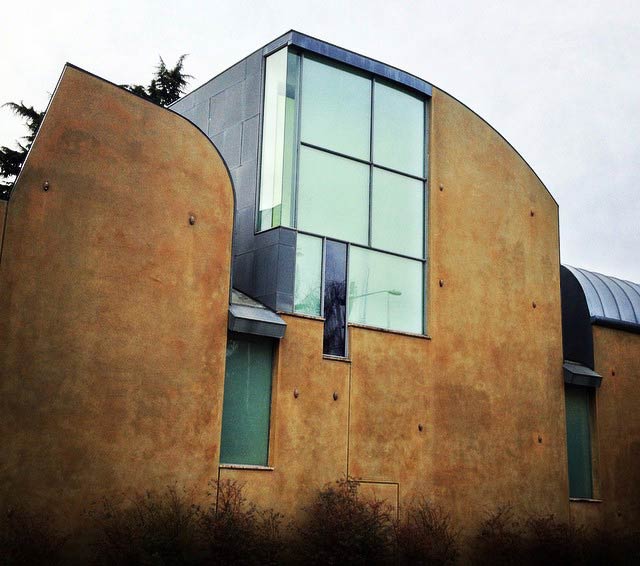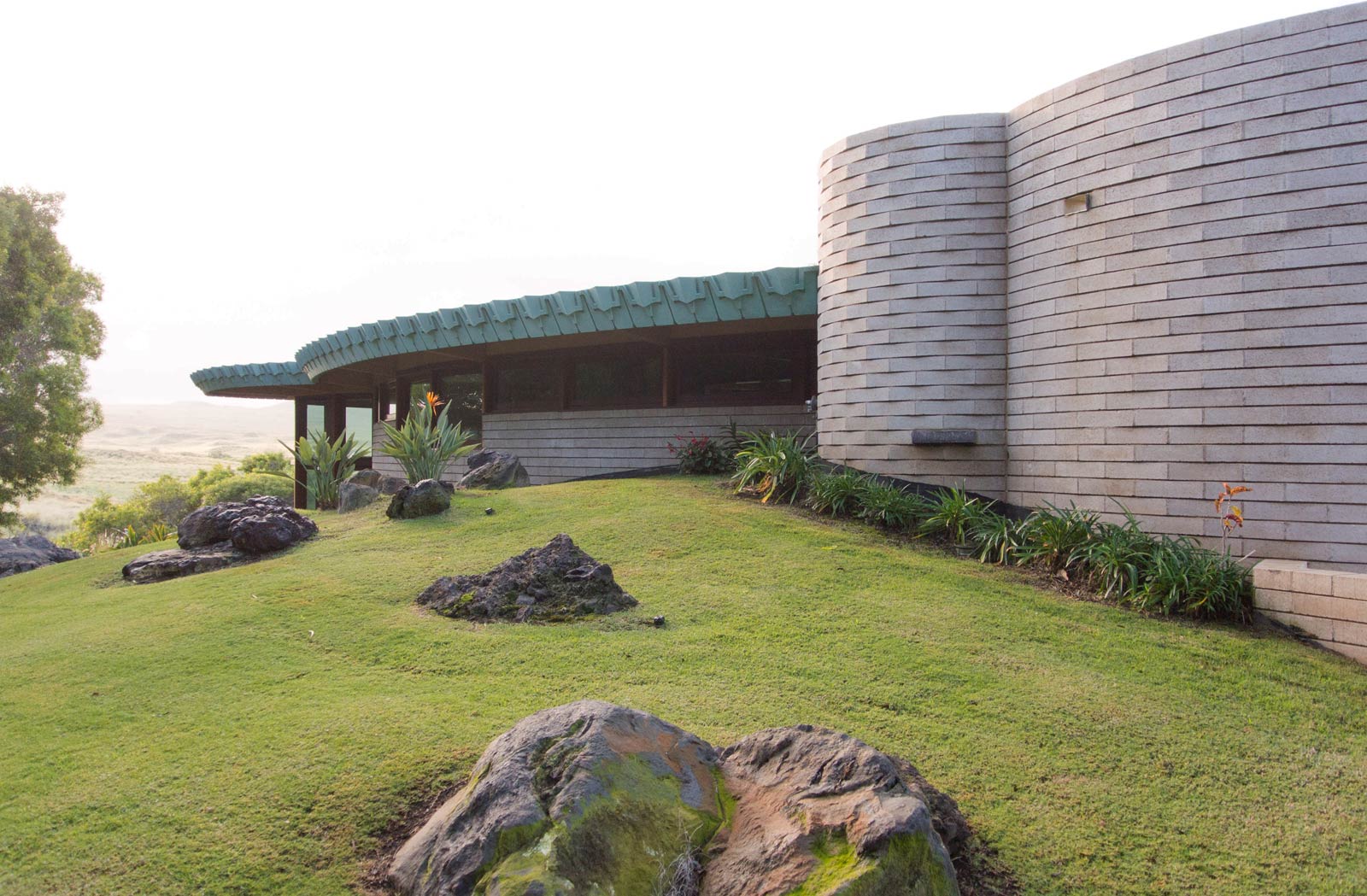
[Photo by BUILD LLC]
If you follow the BUILD Blog, you know that we’re advocates of genuine sustainability. Not the high-gloss, pre-packaged, trend-setting sustainability typically characterized by any assortment of dubious “green” certifications and tossed around like cheap remedies for an ailing environment. We’re also not advocates of flying starchitect teams all over the globe to bestow “sustainable design” on places that we’re led to believe are less enlightened (the overuse of jet fuel doesn’t fall into our definition of “sustainable”). No, we’re referring to a category of sustainability that leaves real and mathematical evidence of easing the stress placed on our ecosystem. Such methods aren’t glamorous, in fact, many of them are down-to-earth and prove difficult for a consumer-driven market to repackage and sell. Rebuilding a house on an existing foundation, for instance, has become a successful method to reduce fuel and building materials on several recent projects in our sphere. But the big box home improvement stores can’t slap an “eco-friendly” label on such strategies and peddle them on their orange industrial shelves. These matter-of-fact sustainability methods also don’t make for very sensational conversation starters at dinner parties. Despite the success of these practical techniques when it comes to reducing the toll of our built environment on the natural one, they remain in the shadow of the more celebrated (but often less effective) methods of sustainability.
There are many of these quiet workers of sustainability and we find that the only thing needed to pick them out of the crowd of imitators is a subtle shift in mindset, namely good old sensibility and a basic gut-check. Today’s post examines one of our favorite, and perhaps least discussed, sustainability strategies: timeless design. While it doesn’t get a whole lot of credit as a sustainable move, it may very well be one of the most important strategies of all. Useful houses and buildings that are respected, cherished, enjoyed, and taken care of, simply last longer. Houses and buildings that last longer don’t get torn down and they don’t end up in landfills. (To say nothing of the additional materials and resources needed to reconstruct.) Nothing insults us more than the house touted as sustainable because it’s made from recycled milk cartons and heated with solar panels, but is demolished within a generation. Structures like this use the term “sustainability” in the worst of ways — as a fashion statement.
Honest sustainability couldn’t be further from trends, and truly timeless design gets right to the heart of the matter. Timeless Design as a term is murky, and architects use it in all sorts of different ways. To offer more substance to the conversation, we’ve broken down the concept of into five categories, each with a favorite example of a built work. Not all examples of timeless design hit all the marks in equal measure, but most of them check several off the list. These are just our categories and examples and we invite you to share your own in the comment section below.
Usefulness
The structures that serve society best have long-term and necessary functions like housing, schools, and places of work. Such structures reduce the indulgences and, instead, provide purpose and adaptability. Well-functioning adaptability can far outweigh conventional sustainability practices like recycling simply because there’s nothing to recycle. One of our favorite examples of usefulness is the Swedish Farmhouse model discussed in an earlier post. Houses based on this model have served families for over three centuries with no end to their usefulness in sight.
Permanence
Timeless design is relevant for several generations, it outlast trends, fashion statements, and the infatuation with styles. It is made of materials and methods that will last a century or longer. The first time we entered Temppeliaukio Church in Helsinki Finland, it felt as if we entered into an architecture born of the earth itself. The experience of the space is so far above current design trends that it makes most cutting-edge architecture seem like a childish game. It is precisely this authentic response to difficult site conditions that makes the “Rock Church” an architectural treasure of the Nordic countries, and an extraordinary example of permanence.

[Temppeliaukio Church Photo by BUILD LLC]
A Sense of Place
Architecture has the potential to be so integrated with a site, that it feels like it simply belongs there. In the most timeless examples, the natural environment would almost seem incomplete without the architecture; the design enhances the place and completes the narrative. In addition to the look and feel of well-sited architecture, creating a sense of place may also involve less obvious qualities. Fostering indigenous building methods and nurturing local talent adds to the significance of the place, and brings a dimension of sustainability to a project. The Louisiana Museum of Modern Art near Copenhagen, Denmark does a remarkable job of delicately weaving a world class museum into an ocean-side landscape: nestling between old growth trees, and framing outdoor sculpture gardens. Largely due to this careful and considered integration over time, the museum and grounds have become one of the most cherished experiences in Scandinavia.

[Louisiana Museum Photo by BUILD LLC]
Authenticity
Buildings are more timeless when they look like what they’re doing and when they respect tradition by circumventing the temptation to mimic or erase. The quality of timelessness is successfully achieved when buildings incorporate the environment and the natural weathering into the architecture. The design allows the effects of sun, wind, and rain to play a significant role in the life of the building. A heightened experience is created because of the patina on a surface, or the wear of a handrail from use over the years. Seattle University’s St. Ignatius Chapel, with its raw and weathered tilt-up concrete panels, is an excellent example of authenticity. The straight-forward design depends on the weathering process to allow the envelope to age gracefully, while the qualities of light, reflection, and touch are enhanced by the day’s climate in the interior experiences.

[St. Ignatius Chapel Photo by BUILD LLC]
Poetics
While the poetics of architecture are difficult to define, you know good design poetry when you see it. Poetics turn the utility of a space into a pleasurable experience, and the sense of place created by poetic design is so permanently rooted into the landscape that it appears to have grown there as a beautiful anomaly. While not replicating the environment, measured poetics allow architecture to be true to itself while seamlessly integrating with the landscape. When performed with mastery, poetic architecture becomes cherished and taken care of over time. We recently had the experience of staying in a house on Hawaii’s Big Island that wove the poetics of architecture to create a timeless residence that has been and will continue to be cherished for generations. Tucked into the landscape, this masterful house exemplifies the poetics of good design.

[FLW Hawaii House Photo by BUILD LLC]
It’s not that all conventional and highly promoted forms of sustainable design are off-course by any means. Some of the products and technologies are certainly worthy of praise and should be part of the overall solution. But along with the gadgets, products, and companies out there pushing sustainable design, we also need a shift in mindset in the equation. Thinking about the built environment with a practical, feet-on-the-ground sensibility is just as important as any of these design additives in our opinion (and our experience). Without a grounded, tangible approach to sustainability, the products and technology just don’t get the critical traction they need to perform adequately. This approach to truly sustainable design relies on basic fundamentals like creating design that is timeless, design that lasts, and design that future generations will gladly nurture.
Cheers from Team BUILD






